Are you trying to work out which Kilimanjaro route to choose for your trek? Fear not, this page will help you make the right choice.
Each Kilimanjaro route has it's own pros and cons. Some are great for scenery, but not so great for acclimatisation (see: altitude sickness on Kilimanjaro). Others offer high summit success rates but are also quite busy at certain times of the year.
Let's jump in and look at the various Kilimanjaro routes to the summit.
My Quick Takeaways:
Planning to climb Mount Kilimanjaro? Here's a concise overview of the main Kilimanjaro routes to help you choose the best path for your adventure:
1. Marangu Route ("Coca-Cola Route")
- Duration: 5-6 days
- Accommodation: Huts
- Pros: Shortest and most affordable route; hut accommodations provide shelter from the elements.
- Cons: Lower success rates due to rapid ascent; ascent and descent follow the same path, offering less varied scenery.
2. Machame Route ("Whiskey Route")
- Duration: 6-7 days
- Accommodation: Camping
- Pros: Highly scenic with diverse landscapes; better acclimatization profile with "climb high, sleep low" opportunities.
- Cons: Can be crowded during peak seasons; requires camping equipment.
3. Lemosho Route
- Duration: 7-8 days
- Accommodation: Camping
- Pros: Remote and less crowded; offers excellent acclimatization and stunning vistas, including a traverse of the Shira Plateau.
- Cons: Longer duration increases cost; requires camping equipment.
4. Rongai Route
- Duration: 6-7 days
- Accommodation: Camping
- Pros: Approaches from the north, offering a different perspective; less rainfall and fewer crowds.
- Cons: Less varied scenery; limited "climb high, sleep low" opportunities.
5. Northern Circuit Route
- Duration: 9 days
- Accommodation: Camping
- Pros: Longest route with the best acclimatization profile; circumnavigates the mountain, providing 360-degree views.
- Cons: Longest duration increases cost; requires camping equipment.
6. Umbwe Route
- Duration: 5-6 days
- Accommodation: Camping
- Pros: Shortest and steepest route; offers a direct path to the summit.
- Cons: Poor acclimatization due to rapid ascent; considered the most challenging route with lower success rates.
Each route offers a unique experience, varying in difficulty, scenery, and acclimatisation profiles. Ready for a deep dive? Let's explore each Kilimanjaro route in detail.
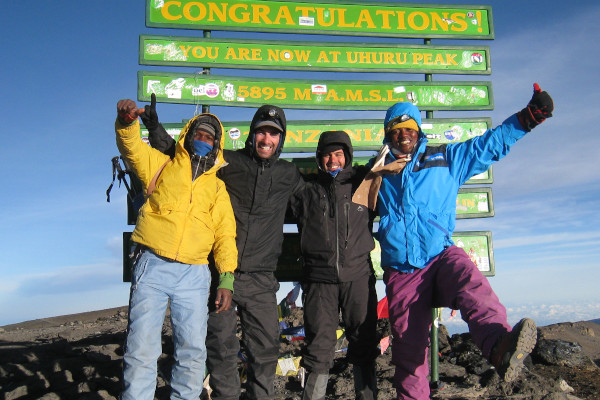
Plan your Kilimanjaro trek
Get a quote from my recommended local Kilimanjaro operator
Kilimanjaro Climb Routes
There are six main Kilimanjaro routes that one can use to trek the highest mountain in Africa. The seventh Kilimanjaro route, Mweka, is used for decent only.
- Lemosho Route
- Machame Route
- Marangu Route
- Mweka Route (descent only)
- Rongai Route
- Shira Route
- Umbwe Route
In addition to these routes, trekkers can also take the Northern Circuit or the Western Breach.
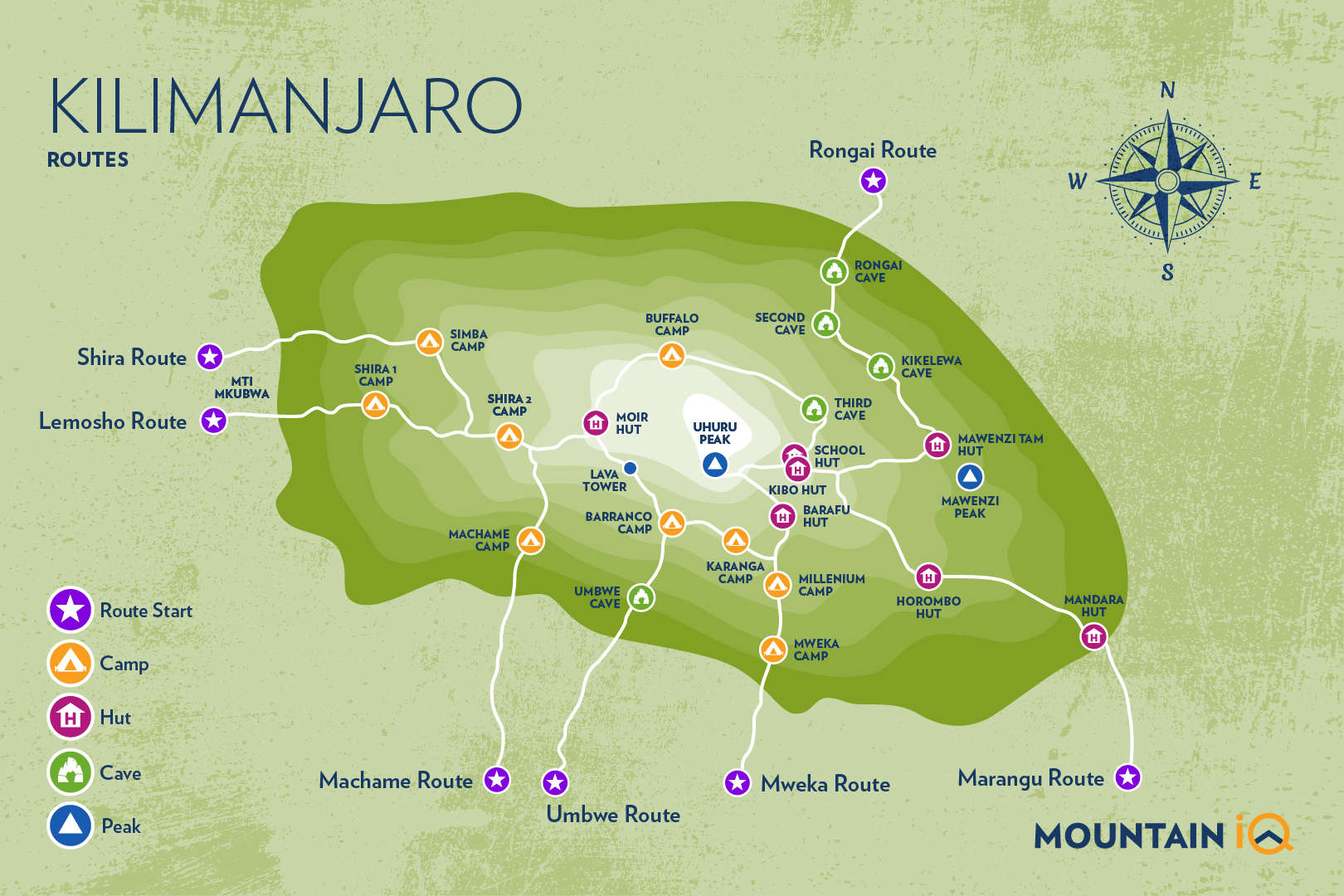
Kilimanjaro Route Summaries
Which Is The Best Kilimanjaro Route?
The best Mt Kilimanjaro route on the southern circuit is the Machame or Lemosho route.
Here's a brief overview of each;
Machame Route
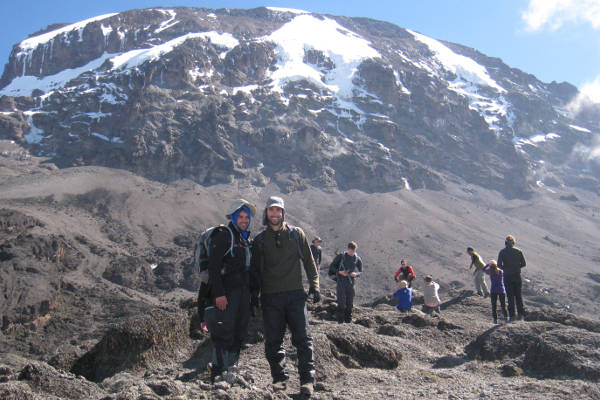
- The Machame route, often described as the 'short and steep' route, is highly recommended for scenic value and has a high success rate, especially if you choose the 7-day itinerary.
- The six-day options is not recommended for first-time trekkers.
- It is a great Kilimanjaro route for acclimatization as it has a climb high, sleep low opportunity for trekkers on day 3. Here trekkers climb from Shira Camp 2 to Lava Tower at 4,600 meters, where they have lunch and then hike back down to Barranco Camp (3,900 meters) to sleep
- Like all Kilimanjaro routes, the Machame is a challenging trek with stunning scenery through four diverse climatic zones.
- There is a good opportunity to split pre-summit day climb by adding an extra rest day at Karanga Camp (only available to seven day trekkers) to leave hikers well rested before summiting
- The route has however got very popular over the past few years which means it can get busy, especially at Barranco where climbers join up with trekkers from the Lemosho, Shira and Umbwe routes (see details on Barranco Wall)
- The Machame route only offers fully catered camping
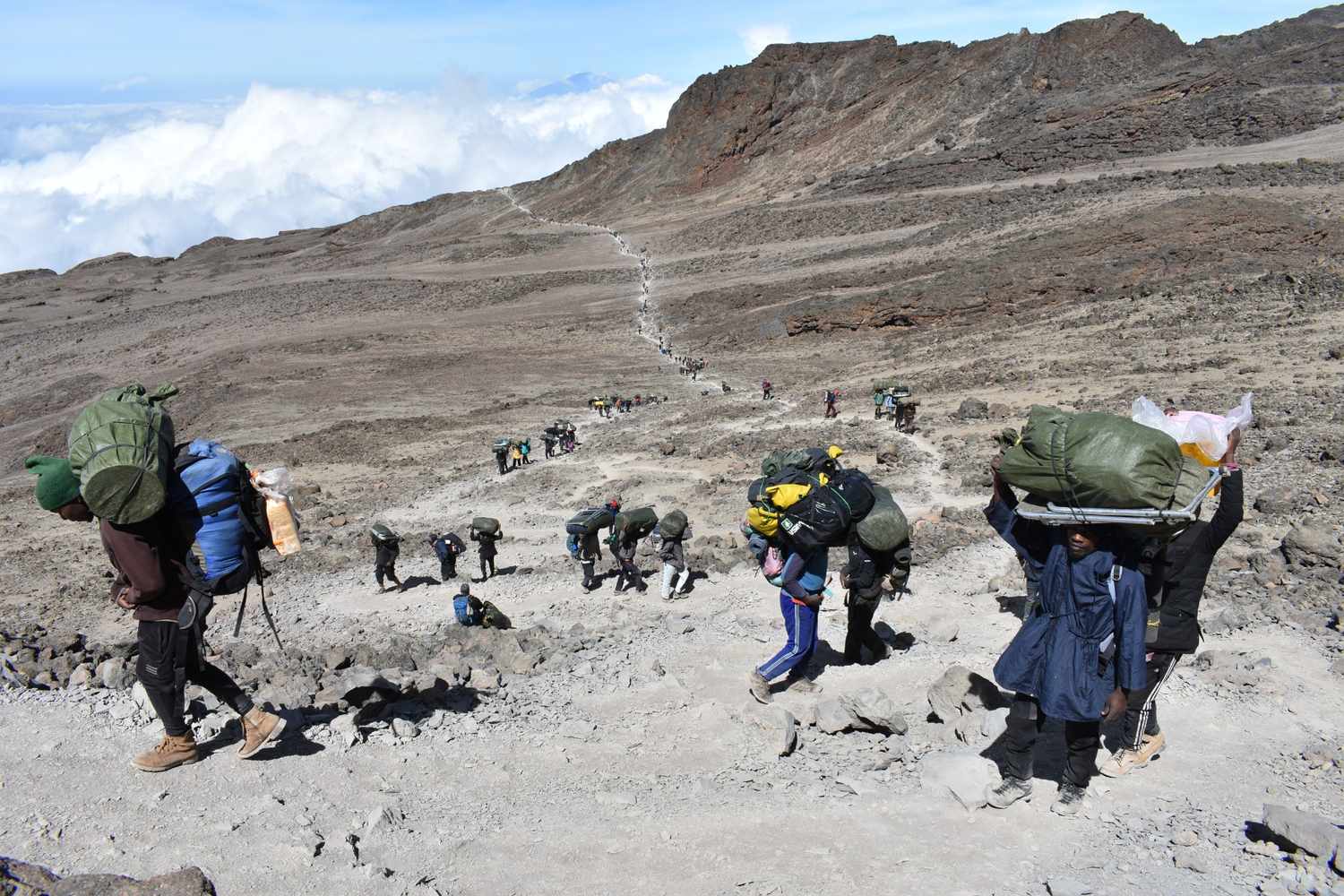
The few km's between Karanga and Barafu are not very scenic. Aso be prepared to get blasted by cold, high altitude winds.
Why choose the 7-Day Machame Route? Six day Machame route trekkers skip Karanga Camp and continue straight on to Barafu (Base Camp).
This is only only about 4km further, which is fine if you are feeling good.
However, if you are tired and suffering from altitude sickness symptoms (as most people are), it means you have very little rest before your midnight summit attempt.
The 7-day option is much better for acclimatisation.
Lemosho Route
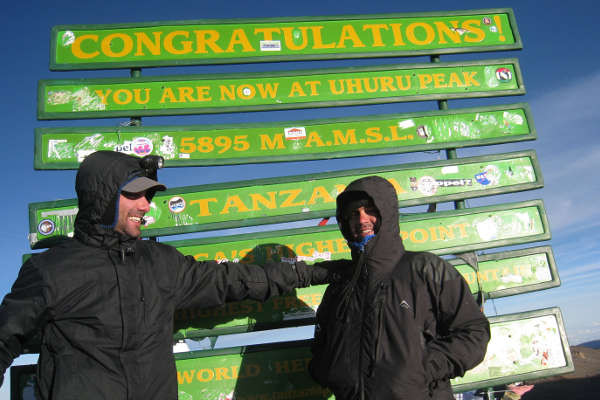
- The Lemosho is a beautiful route that departs from the West side of Mount Kilimanjaro
- Due to its route profile the Lemosho can be completed on a seven or eight day itinerary and offers lots of opportunities to properly acclimatize. Because of it’s versatile route profile it is one of the best Kilimanjaro routes and has high summit success rates
- It is also recommended as the starting point is relatively remote and hence provides trekkers with a rather untouched and wild start to their Kilimanjaro adventure. Spotting large wildlife, like antelope, buffalo and even elephant is unusual but not impossible
- The route also provides unparalleled and spectacular views of the dramatic gorges that characterize the western side of Mount Kilimanjaro
- The Lemosho offers trekkers the experience of hiking across the Shira Plateau – one of the largest high altitude plateaus in the world
- Trekkers on the Lemosho typically converge with Machame route on day 3 at Barranco camp and use the Barafu camp route to the summit; however, it is now quite common for Lemosho trekkers to veer north before Lava Tower to join the Northern Circuit (see details below) which circles the north side of Mount Kilimanjaro and follows the summit passage via Gilman’s Point.
- The Lemosho route can also be used by trekkers planning to climb the Western Breach to the summit
- Like the Machame Route, the Lemosho is fully catered camping only
Northern Circuit
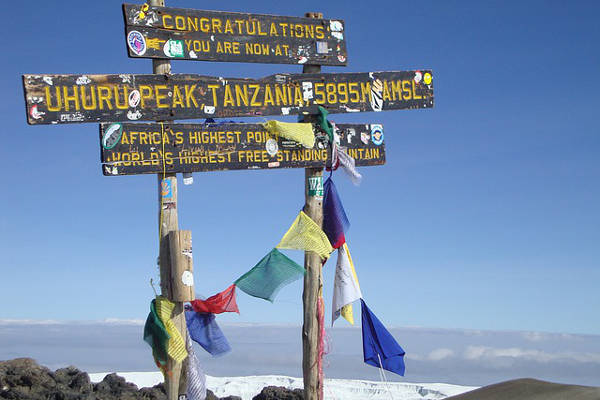
- The Northern Circuit is the longest route on Mount Kilimanjaro, and has one of the highest summit success rates as the route offers lots of climb high, sleep low opportunities, and time to acclimatise
- The route departs from same start point as Lemosho but then joins the Northern Circuit near Lava Tower, before traversing the north slopes of Mount Kilimanjaro
- The summit passage is via Gilman’s Point
- The route can be completed on an eight or nine day itinerary
- If you are looking for a quiet and wild Kilimanjaro experience, then this route is for you.
Rongai Route
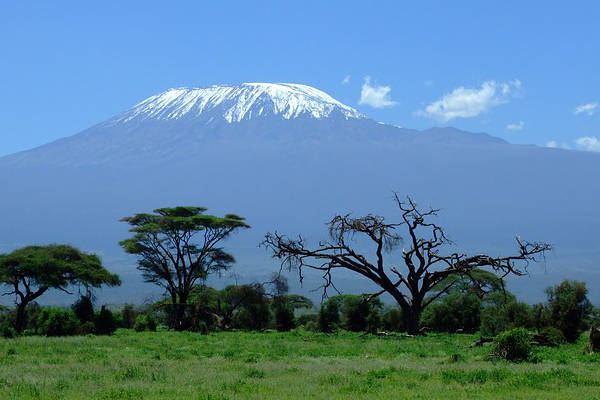
- The Rongai route is the only northern start point to Kilimanjaro, beginning on the North East side of Kilimanjaro National Park
- The Rongai offers a true wilderness experience on the early stages of the climb, and like the Lemosho route it is possible to see large wildlife like buffalo, antelope and elephant
- The Northern slopes tend to be dryer than the southern slopes which makes the Rongai a great Kilimanjaro Route for trekking during the wet season.
- However, because the northern slopes are dryer they can also be considered less scenic. That being said, a northern approach is often characterized by clear views of Kilimanjaro – something that is not that common from the southern side
- The Rongai is also a flatter route for the first few days which makes for easy trekking. The route is usually completed on a seven day itinerary but has limited climb high, sleep low opportunities which means that acclimatisation opportunities are not as good as on other Kilimanjaro routes
- Typically the Rongai route uses the passage from School Hut up past Hans Meyer Cave and Gilman’s Point to Uhuru Peak
- The route descends via the Marangu route, hence the route has fully catered camping until the last night on the mountain – beers at Horombo Hut anyone?

Plan your Kilimanjaro trek
Get a quote from my recommended local Kilimanjaro operator
Easiest route up Kilimanjaro
There is no easy route up Mount Kilimanjaro, but the Marangu Route (i.e. Coca-Cola Route) has a reputation for being the easiest Kilimanjaro route.
Marangu Route
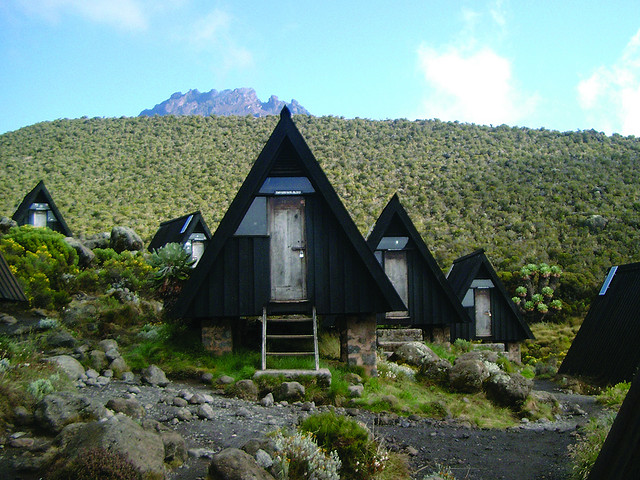
Image: Tony Young
- The Marangu route was Nicknamed the ‘Coca-Cola’ route as Coke used to be sold along the way in tea huts
- The route is often selected by unprepared, inexperienced climbers as a result of the reputation for being the “easiest” Kilimanjaro route, attributing to the lower success rate
- It is also the shortest Kilimanjaro route with a relatively poor acclimatization profile, which is a major contributor to the low success rates on the Marangu.
- The six day itinerary does give trekkers an opportunity to climb high, sleep low; however the elevation is moderate and not as effective as other climb high, sleep low opportunities that are present on other Kilimanjaro routes
- Out of all the Kilimanjaro routes, the Marangu route is the only one with dormitory style accommodation in huts for the whole duration of the climb. The huts come with mattresses and basic amenities, making them a popular choice for budget tour operators who don’t have the right equipment to tackle the other Kilimanjaro routes
- The Marangu offers beautiful views from the Saddle but can be considered less scenic than other Kilimanjaro routes due to ascent and descent on same trail
Kilimanjaro Routes I Don't Recommend
Shira Route
- Same as Lemosho, except Shira route offers higher start point and therefore poorer acclimatisation
- It is a route that we wouldn’t recommend because of it’s high start point
Umbwe Route
- The Umbwe Route has a short and steep beginning profile up to Barranco camp where trekkers join climbers from the Lemosho, Shira and Machame route
- Some Umbwe route trekkers don’t join the southern circuit at Barranco but instead continue north, up to Lava Tower and then onto the Western Breach
- The Umbwe has poor acclimatization opportunities due to its rapid ascent and therefore success rates can be low on this Kilimanjaro route
- Fully catered camping only
Western Breach
- The Western Breach is the most technically difficult approach to Mount Kilimanjaro, but perhaps the most rewarding!
- The approach to the Western Breach usually starts on the Umbwe Route and then continues north and up from Lava Tower
- The Western Breach was closed due to fatal rockfall in 2006, but reopened in 2007 with a new and safer route configuration. Nonetheless, many tour operators don’t offer the Western Breach on their route roster
- Only advised for experienced trekkers – it is recommended that all Western Breach climbers use helmets and it is not uncommon to need point crampons during the wet season and sub-surface ice can be an issue
- Success rates are typically moderate to high as the route is usually only tackled by experienced high altitude trekkers
Kilimanjaro Summit Routes (Passages)
As alluded to above, there are three summit passages on Kilimanjaro.
Stella Point
The first is via the southern slopes of Kibo, up to Stella Point and then west around the crater rim to Uhuru Peak.
This approach is used by trekkers on the Lemosho, Shira, Machame and Umbwe Routes. It is the easiest summit passage as it only take one hour from Stella Point to Uhuru Peak.
Gilman's Point
The second passage approaches from the Eastern side of Kibo, up to Gilman’s Point and then west around the crater rim to Uhuru Peak.
Trekkers on the Rongai and Marangu Route, and Northern Circuit use this passage to the summit.
It takes around two hours from Gilman's Point to the summit proper, making this a harder passage.
Crater Camp (Western Breach)
Thirdly, trekkers can use the more technically challenging approach to the summit via the Western Breach.
Trekkers who use the Western Breach usually approach from the Umbwe Route up to Lava Tower, before taking a steep ascent past Arrow’s Glacier and up the Western Breach to Crater Camp and Uhuru Peak.
The Western Breach can also be approached using the Machame, Shira and Lemosho Route.

Plan your Kilimanjaro trek
Get a quote from my recommended local Kilimanjaro operator
Kilimanjaro Trail Routes FAQ
What is the best Kilimanjaro route?
The best Kilimanjaro route is the 8-day Lemosho or the 7-day Machame.
Both routes offer good acclimatisation opportunities, and therefore have low incidence of altitude sickness. Summit success rates on these routes are high, and both are very scenic.
What is the easiest Kilimanjaro route?
The Marangu route is often touted as the easiest route on Kilimanjaro. This is because it's the shortest in length and the only route with hut accommodation.
But the short time on the mountain does mean that many people who climb Kilimanjaro via the Marangu experience altitude sickness and don't reach the summit.
If you choose the Marangu route make sure to go for the 6-day option (not the 5-day trek)
Which Kilimanjaro route has the highest summit success rates?
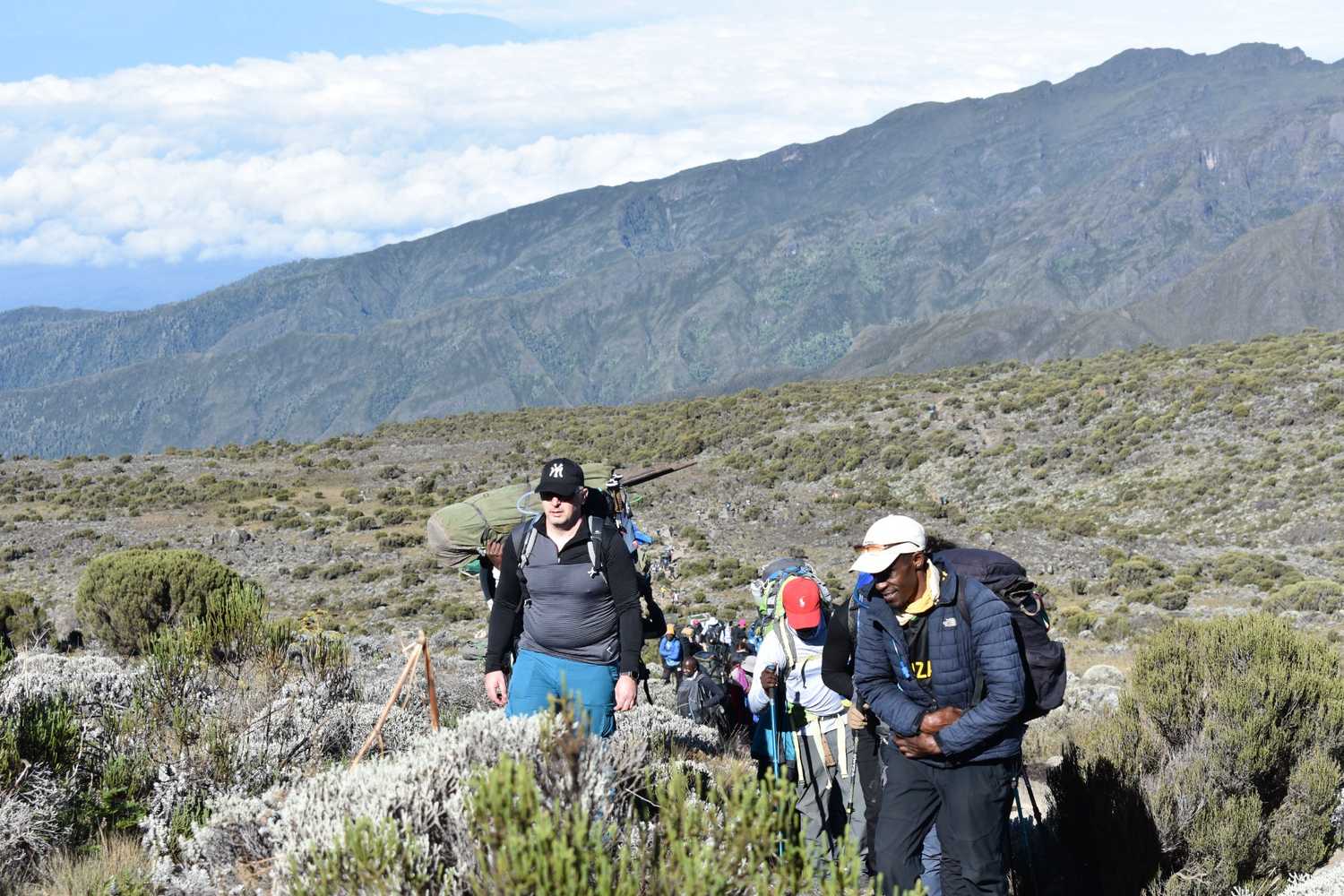
No Kilmanjaro route is 'easy' but the Machame 7-Day option does offer shorter distances and good opportunity for acclimatization.
The Northern Circuit has the highest summit success rates as it is the longest route and offers lots of time to acclimatise. The 8-day Lemosho and 7-day Machame also have high summit success rates.

Plan your Kilimanjaro trek
Get a quote from my recommended local Kilimanjaro operator
My Final Thoughts
And there you have it: all the essential info about the various Kilimanjaro routes. Which route will you take? Let me know in the comments below and let's share the love.
More Kilimanjaro guides:

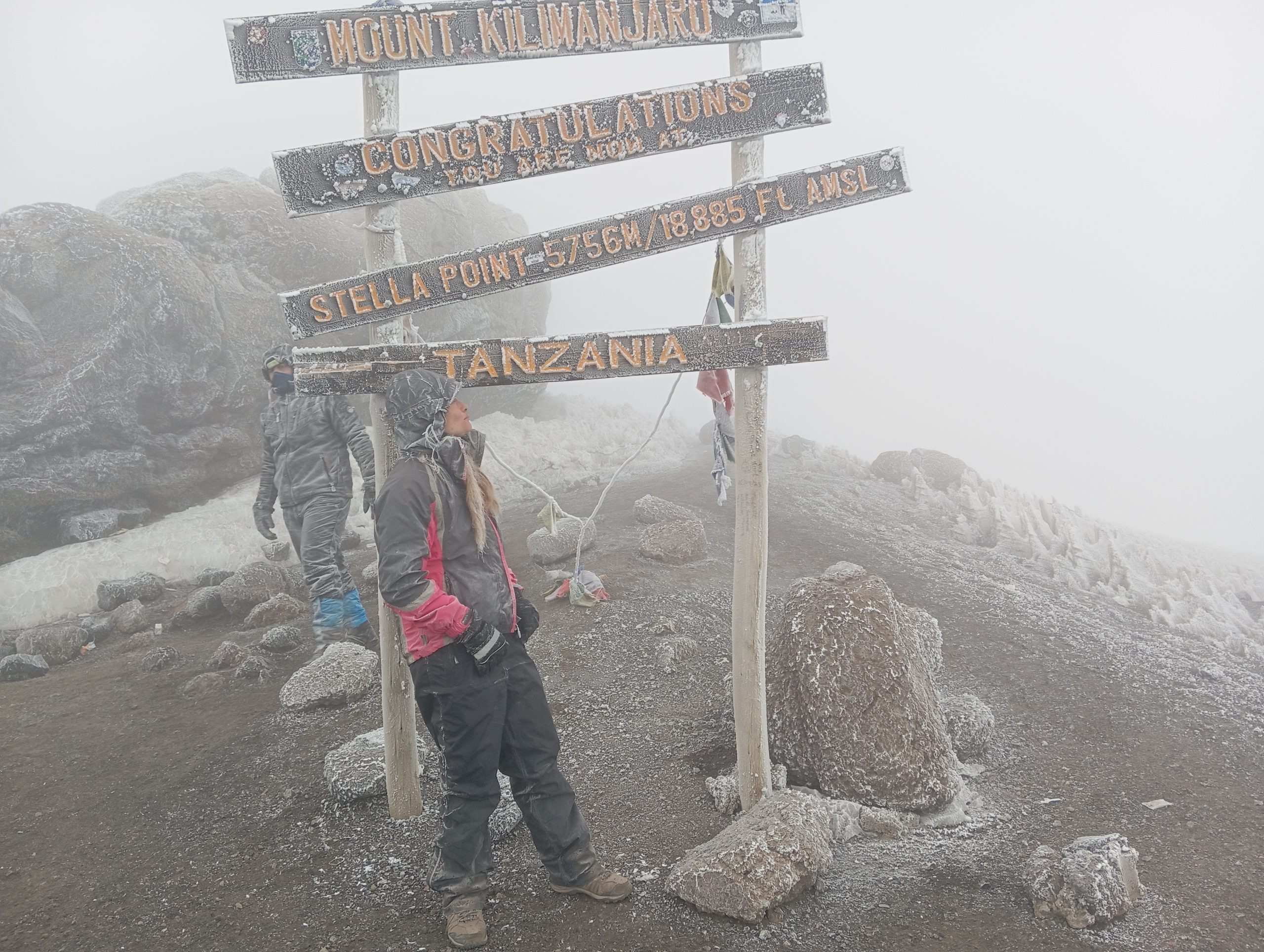
Hi Mark – In Jan. 2025 we are planning JUST a DAY hike from the west/south side of Kilimanjaro. We have time constraints so we'd like your opinion on the best DAY route that will reach a spot to at least view the glaciers (via Shira, Lemosho, Machawe, or Umbwe route). We are in our 60's and relatively fit, but my fitness level now usually allows around 8 miles RT, and 2,000 ft. elevation gain. Any suggestions, even if your company doesn't handle day hikes? We'd appreciate the input. Thanks, Cathy and Doug (WA State, USA)
Hi Cathy and Doug, I’m only aware of day hikes from Marangu. Unfortunately I don’t think you get a view of the glaciers from low on this route. We unfortunately don’t offer day trip options on Skyhook: https://www.skyhookadventure.com/go/climb-kilimanjaro
Hi. We are planning to hike next summer with our 12-year-old daughter. We are getting mixed opinions on the route we should take. Rongai is highly recommended for children by one company followed by Lemosho which they state is a bit more challenging. However, a second company is recommending the Shira route. Any suggestions on routes for hiking with minors?
Hi Lyn, I would go with either the Lemosho (8-day) or the Rongai (7-day). I wouldn’t do the Shira (this is basically the same as the Lemosho but with a higher starting point).
I am 62, medium build and fit. I am plannin a Kili hike for the fall of 2023. I was told October might be a good time to avoid the high season of travelers but I would like to incorporate the "great migration" which I believe occurs in December. My girl friend did both in December a few years back. What would the Kili hike conditions be in December (pros & cons) for the Machame Route. PS I am traveling solo as well.
Hi, December is not a bad month. It can see more snow at the summit, but in general you should get relatively good conditions. October usually has better conditions though. For the Wildebeest, see here for a migration map: https://www.climbkilimanjaroguide.com/wildebeest-migration/
HI Mark, I have successfully climbed Aconcogua in 1993, Denali in 1995, but was unsuccessful in climbing Kilimanjaro in 1997 reaching the small hill right below the summit, but for some reason was turned back when my group witch had already summited were coming down? I was so disappointed that I went back in Nov. the next year and attempted the great western breach with the same guides. Probably the most dangerous thing I have ever done. The gwb was a 45% snow slope and unlike Denali the guides had no equipment except for one ice axe that they used to cut hand and foot holds in the ice. After several hour we turned around because of impending avalanche danger when the sun hit the slope I shudder each time I think of that experience! I returned with my wife in 2003 on the Marangu Route, she stopped at Kibo, but I reached Gillmans Pt., but because of the footwear I chose I kept slipping and didn’t have time for the summit. The mountain has been my nemesis. I am now 80 years old and would to go for another try. You’ll probably tell me to forget it , but It’s been nagging at me for all these years, so what in my case would be my best option? Best time of year and best route? Jim
Hi James, nemesis indeed – like Ed Visteurs on Annapurna. Your ’98 attempt on the Western Breach sounds frightening. Thankfully the guides and operators on the mountain have professionalized over the last 20 years, so things are a lot safer. It’s a big ask at 80, but you sound very fit so it’s totally doable. Best time to go I would say June-October, and the best route is the 7-day Machame or 8-day Lemosho. Here’s some inspiration: https://www.climbkilimanjaroguide.com/anne-lorimor-oldest-person-kilimanjaro/. All the best!
Which route do you recommend for a “shorter/easier” summit? I’ve seen some summits go from Kosovo, instead of a lower camp.
Hi Dave, the 5-day Marangu is the shortest route on Kilimanjaro but has relatively low summit success rates as it doesn’t provide much time to acclimatise. If you are looking for a short route with reasonable summit success rates then I recommend the 6-day Machame.
There are between 3 and 5 of us who will be in Kenya from May 3-17, 2020, and considering hiking Mt. Kilimanjaro afterwards. If you think the weather will allow, is there a tour operator who you can recommend we contact who will give us a great opportunity to get to the top? We’re all quite good hikers. I have been to Everest base camp a few years ago, and the others have ascended Mt. Fuji. We live near the Rocky Mountains and hike there.
Thank you.
Hi Robert, sounds great. You can get a tour operator recommendation here: https://www.climbkilimanjaroguide.com/go/
Hi,
I went to Kilimanjaro Machame 6 days hike in September 28, 2019. I went up to Baraja camp and for some reasons I did not join the summit day hike at night. I had no altitude sickness neither any other physical issues. I came back next morning via Melaka camp. Since then I am extremely repenting for not attempting to summit . I am thinking to go back in Christmas holiday just to reach to the top via Marangu Route. I have no desire to enjoy any scenic views. Just asking your opinion, is that too soon to return to the mountain barely in two months? Or, should I wait for few more months to ensure I will reach to the summit for sure? Please advise. Than
Best regards
Hi Sandy, sorry to hear that you didn’t summit. I see no issue going back around Christmas to give it another go. To give yourself the bast chance of summiting though I would recommend a longer route like the 7 day Machame or 8 day Lemosho. These have good acclimatisation profiles and therefore reduce the risk of altitude sickness. All the best!
Hi,
I am 76 years old fit and healthy, maybe some arthritis in the knees. I have successfully peaked mt Kinabalu in Sabah 3 years ago and completed the Everest base camp without any problems 2 years ago. I am very active and do walking treks in Sydney, Australia. I need your advice to peak Mt Kilimanjaro. Which routes.? Thanks
Hi Bhoopinder, thanks for getting in touch. You sound super fit for your age. I recommend going for either the 7 day Machame or 8 day Lemosho. Both are well profiled for acclimatisation and have high summit success rates.
how are the sanitary and higienic facilities during these routs! Do the huts offer the toilets in the dorm?
Hi Boris, all camps have long drop loos. They are generally quite good, as far as camping long drops go. Some tour operators offer portable loos as part of their package. Here is more detail: https://www.climbkilimanjaroguide.com/toilets-on-kilimanjaro/
I’m a relatively experienced hiker from coastal Texas. Being that I’ve lived my entire life 60’ above sea level I have spent very little time at altitude. However, this past Thanksgiving I did an hour long hike in Switzerland on the Jungfrau glacier (+13,000) in knee to thigh deep snow with no side effects other than total exhaustion of course. Hiking in snow sucks when you’re from Houston. Anyway, I’m planning a trip to Kilimanjaro and I really really really really want to tackle the Western Breach. I’m the typical stupid Texan with the go big or keep your ass on the porch mentality. I do not however have a death wish so…. Is it possible for someone in my situation to attempt this route having never done a 19er before.
Hi Jennifer, yes, its is possible to attempt the Western Breach. In fact as far as hiking goes the route is much more difficult the standard routes on Kilimanjaro. The reason why people avoid this route is because of rockfall risk and sustained altitude gain which doesn’t help with acclimatisation.
Hello, I am Charles, 30 Yrs Tanzanian. I have two big Adventure to accomplish in my life, to drive across all countries in Africa and to Climb Mount Kilimanjaro. I would like to spend my birthday week in September to climb the mountain. I need your recommendations on the best routes which is affordable and safe for me. Kindly assist for me to achieve my life time dream!
Hi Charles, I recommend the 7 Day Machame or 8 Day Lemosho. All the best!
I am looking to choose a truck up Mount Kilimanjaro. I don’t mind steep but I don’t like cliffs or feeling like I’m on the edge of a very high point which Trails do you recommend for somebody like myself in great condition just not loving the Heights
Hi Heidi, There are no real big exposures on Kilimanjaro. The Southern Circuit routes (Lemosho, Machame) go over the Barranco Wall, which is a slightly exposed scramble, but looks more scary than whht it actually is: https://www.climbkilimanjaroguide.com/barranco-wall-mt-kilimanjaro/. If you want to avoid the Barranco Wall then the Rongai route is your best option.
I’m 65, and just back from the Salkantay trek to Machu Picchu, including a 15,000 ft (4600 m) pass, with no problems. In your experience, does having done well at 15,000 ft mean altitude problems on Kilimanjaro are very unlikely, or is the difference so great that it is not predictive? Thanks!
Hi Brian, congrats on completing the Salkantay trail. I have done it too and it was fantastic! It is a good sign that you coped well with the altitude but unfortunately this isn’t necessarily a great predicator of how you will perform at altitude in the future. Kilimanjaro is quite a bit higher than the Salkantay trail and the altitude is much more sustained. Unlike the Salkatay where you go high to get over a pass, Kilimanjaro is sustained ascent so the risk of altitude sickness is much higher. That being said, if you follow best practice by choosing a route that has at least 7 days on the mountain (i.e. the 7 day Machame or 8 day Lemosho) as well as try to take the try nice and slow, then you will give yourself the best chance of summiting without experiencing altitude sickness. Hope this helps. It’s worth reading this article: https://www.climbkilimanjaroguide.com/acclimatization-kilimanjaro/
Hello,
Thank you for your nice page and information.
I’m still in doubt if I would do the regular lemosho route or start with the lemosho route and then take the northern route. I want the most scenic route. On one hand I kind of like the ‘lonilyness’ of the northern route, on the other hand I heard barranco camp is such a nice place. What would you recommend?
Hi Eva, That’s a tough one. Both routes are fantastic. The key difference is length and popularity. In terms of length the Northern Circuit is longer in distance and days. This can be positive in terms of acclimitisation and hence summit success, but can mean more trekking fatigue as you are on the mountain for longer than the standard Lemosho. The second point is probably more pertinent. The Northern Circuit is significantly less travelled. On the Lemosho the route joins up with all Southern Circuit routes and therefore many more people are on the trail. I would estimate about 50 times more people on the Southern Circuits vs. the Northern Circuit. Finally the summit approach is different on the Northern Circuit as it takes the route up the East side of Kibo via Gilman’s Point. This approach is slightly longer than the Stella Point approach. Either way both routes are great so it really comes done to whether you want a quiet trekking experience or busier camp / trail experience. Hope this helps!
Hi,
I want to do the Rongai Route in August. Since I learned from your overview, the route doesn’t offer the best acclimatisation, so I wonder if it would be wise to do Mt. Meru upfront?
Thank you for your recommendation,
Valentin
Hi Valentin, The 7-day Rongai route is not too bad when it comes to acclimatisation. I think I was referencing the 6 day on the route guide. That being said, if your have the time then doing Mount Meru before Kili will always benefit your summit success chances and provide the opportunity to summit another iconic African peak!
Hi there,
I (48 yr old female) would like to climb Kilimanjaro with a friend in September. Whilst my friend is experienced at high altitude climbing, I am only used to day hikes in the Alps, up to 3000 m. From what I read, the 7 day Rongai route might be an option – I am not much concerned about scenic beauties, but feasibility… Also our time slot is rather small (20.-28.09.16), so I guess we have to consider a private tour, although I wouldn’t mind a group.
So my questions are: would you recommend Rongai as well, or another option? I haven’t seen any summit success rates for this route, but I imagine they might not be too high, due to the fact that inexperienced trekkers like myself tend to choose this one?! And could you possibly also recommend tour operators? And one last question (for the moment ;-): what do you think about the prophylactic use of Diamox?
Many thanks,
Manuela
Hi Manuela, The 7-day Rongai is a good route, but as you say it is not the most scenic. It also doesn’t provide an excellent climb high, sleep low profile and in my opinion the approach to the summit via Gilman’s Point is more challenging as it is longer and a little steeper than that on the Southern Circuit routes (which use Stella Point). On the whole though it is not a bad route and definitely worth considering. Alternatively I would recommend the 7-day Machame or Lemosho. These two routes are more scenic (especially the latter that starts on the far West side of Kilimanjaro) and do have very good acclimatisation profiles. The Machame is a busy route so if you are trying to avoid people then it is perhaps not the best. The two routes converge at Barranco Camp so you can expect a busier summit night. If I was pushed I would say the 7 or preferably 8-day Lemosho is the best route on Kilimanjaro. If you have the time, the Northern Circuit is also very good from an acclimatisation perspective. To get a tour operator recommendation go here: https://www.climbkilimanjaroguide.com/go/ and for information on Diamox go here: https://www.climbkilimanjaroguide.com/using-diamox-on-kilimanjaro/. All the best!
Hello
I am 60 years old with decent hiking experience.Have done Machu Pichu,Patagonia and Everest base camp till 15000 feet when we were stopped due to snow.
What route do you think is best and sucess to sumit
Thanks
Hi, I recommend either the 7-day Machame or 8-day Lemosho. If you have more time then you may want to consider the 9-day Northern Circuit. All the best!
I am trying to choose a route to climb. I have looked at all of them and need your expert opinion to help me choose. I am climbing alone although I would join a group if there was one. I want to find the route that will give me the prettiest sights. I have narrowed it to Machame, Umbwe and Lemosho which all combine at Barranco. So, which route would give me the most fascinating first 2-3 days? And if it’s the Umbwe route, how worried should I be about the altitude? Does the fact that it doesn’t have a climb high and sleep low make it nearly impossible or can someone in great shape who takes it slow be ok? I assume the other routes will not be a problem, and I even wonder about the altitude differences in all of them. Can you descend on Umbwe if experiencing AMS and extend the route a day? I know I asked a lot and I thank you for your attention to this.
Hi Corey, Thanks for your comment. The two key things to consider when selecting a route on Kilimanjaro: 1. Make sure that the route duration is long enough to ensure adequate acclimatisation. Five day routes are just too rapid. Ideally I recommend seven day treks; however, six day treks are an affordable alternative. 2. Make sure the route provides a climb high, sleep low option. Again, this is a critical factor in many trekkers success on Kilimanjaro and I highly recommend you go for a route that provides this option. With these two considerations in mind, I recommend either the seven day Lemosho Route which departs from the West of the Mountain and provides ample opportunity to acclimatize. Alternatively, I am also a fan of the seven day Machame Route. If I was pushed I would say the Lemosho is the most scenic of the two (but not by much). Hope this helps. If you would like a trekking quote from our trekking partner check out this page (https://www.climbkilimanjaroguide.com/go/) and we’ll get them to follow up with you. All the best!